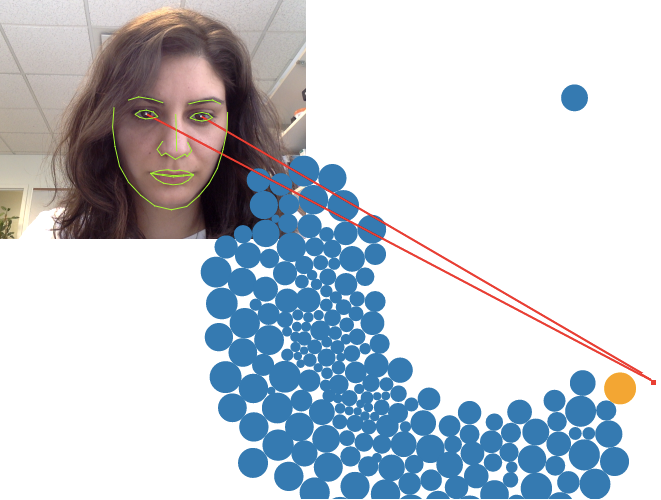Examples

WebGazer.js on an Empty Webpage with calibration
See how easy it is to integrate WebGazer.js on any webpage. With just a few clicks you will get real-time predictions. Follow the popup instructions to click through 9 calibration points on the screen whilst looking at the cursor.

Ball Collision Game
Move the orange ball with your eyes and create collisions with the blue balls. Train WebGazer.js by clicking in various locations within the screen, while looking at your cursor.
Acknowledgements
Webgazer is developed based on the research that is done by Brown University. The work of the calibration example file was developed in the context of a course project with the aim to improve the feedback of WebGazer, proposed by Dr. Gerald Weber and his team Dr. Clemens Zeidler and Kai-Cheung Leung.
This research is supported by NSF grants IIS-1464061, IIS-1552663, a Seed Award from the Center for Vision Research at Brown University, and the Brown University Salomon Award.
